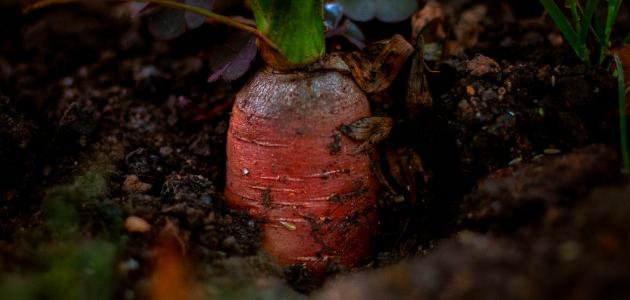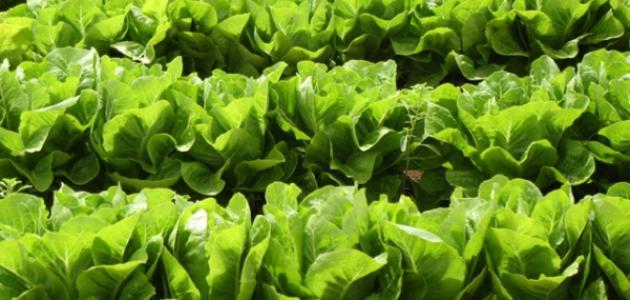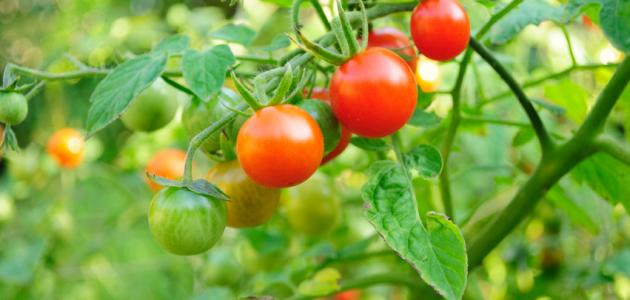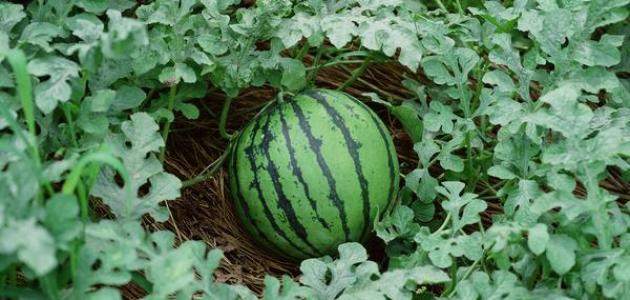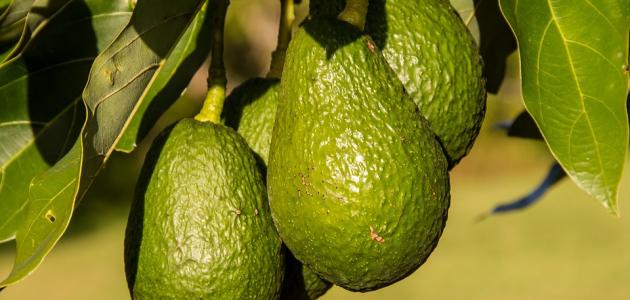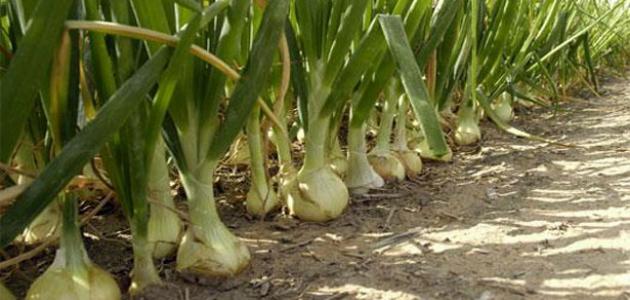الجزر
Carrots are an oval herbaceous plant belonging to the Apiaceae family, which produces edible roots. Its scientific name is Daucus Carota, and it has several types. There are white carrots, yellow carrots, and orange carrots. The brighter the orange color of the carrots, the greater the amount of Of provitamin A, it is believed that wild carrots were first found in Central Asia around the year 1000 AD, where seeds were found in archaeological excavations, which indicates that carrots were used in ancient times as a medicinal treatment before they were domesticated, improved their taste, and became suitable. For eating, and in the thirteenth century carrots began to be cultivated in northwestern Europe and China, and they are now largely grown in temperate regions.
It is said that the origin and origin of carrots is from Afghanistan, then it moved from there to the countries of the Middle East in the period between the ninth and tenth centuries, and from the countries of the Middle East it began to move to various countries of the world. As for the history of carrot seeds, it goes back to the eighth century BC, when it was famous among the Greeks. And the Romans, the Greeks were the ones who improved the taste of carrots so that their taste changed from bitter to sweet. They called it Philon or Veltron, and they considered it a cure for love diseases. They also called it (Daucus Pastinaca), then the name changed to (Daucus Carota) so as not to confuse it with Parsnips, known as Parsnip, while the name Carrot that is used now is of French origins.
Read also:How to plant cherriesCarrots have many benefits, as every 100 g of carrots contains 88.29 g of water, 41 calories, 0.93 g of protein, in addition to 0.24 g of fat, 9.58 g of carbohydrates, 4.74 g of sugars, and 2.8 g of sugar. Of fibre. The minerals carrots contain are calcium, in the amount of 33 mg per 100 grams. It also contains 12 mg of magnesium, 35 mg of phosphorus, 320 mg of potassium, and 69 mg of sodium. Carrots contain many vitamins. Every 100 grams of carrots contain 5.9 mg of vitamin C and 16,706 international units of vitamin A. It also contains quantities of thiamin, niacin, riboflavin, vitamin K, and vitamin B6.
How to grow carrots
Carrot cultivation is successful in light clay lands that have good drainage. It is also grown in sandy loam lands and sandy silt lands. To produce a larger crop, it is usually preferable to grow it in sandy lands, as its color is better there. However, if the farmer wants to have long, soft roots It is preferable to plant it in deep and light soils with good drainage. In organic lands, the roots are rough, short, and branched. It is worth noting that carrots are not planted in hard lands because seed germination is greatly delayed in them, production is weak, and the shape of the roots can be inconsistent.
Read also:How to plant tomatoes from seedsCarrots are propagated by planting seeds directly in the permanent field, and not through seedlings, as transplanted carrot plants lead to the growth of roots that are inconsistent in shape and are often twisted. Carrots are grown by scattering seeds randomly or scattering them in rows spaced 20 meters apart from each other. Approximately cm, and in beds whose dimensions are 2 x 3 m. It is planted in heavy lands at a depth of 1.5 cm, while in light lands it is planted at a depth of 2 cm. It is necessary to take good care of the land before starting planting, as carrot seeds are slow-growing and weak in germination and need a very suitable environment for cultivation. .
Preparing the soil for planting
Carrot plants need approximately 2-4 months to mature. It is worth noting that carrots are somewhat slow-growing, so you should not panic if they do not grow quickly. The first step in growing carrots is to prepare the soil for planting, and this is done through the following:
- Ensure that the soil is free of stones, as stones obstruct the root path, and thus the crop is negatively affected.
- Plow the land well before planting it, as carrots need well-turned and plowed soil so that their roots can penetrate into it easily.
- Choose the appropriate type of soil for growing carrots, as they grow best in sandy or loamy soil.
- Avoid excessive fertilization of the soil, as fresh or preserved fertilizer can lead to branching of the roots and the growth of lateral roots from the main root.
Caring for carrot plants
Here are some tips for caring for carrot plants:
Read also:How to grow mango- Keep the soil moist, as this speeds up the germination process, and care must be taken that sunlight does not hit the crop directly.
- Fertilize the soil approximately 5-6 weeks after sowing the seeds.
- When the plant becomes 3 inches tall, it can be trimmed with scissors rather than pulling it out, to ensure the roots are not damaged.
- Regularity in the irrigation process, as a lack of moisture in the soil leads to the formation of long roots with a poor color, and their texture is rough, while increasing humidity leads to an increase in vegetative growth and a decrease in the yield, and the color of the roots is poor and the amount of sugar decreases, while abundant irrigation After the crop is exposed to thirst for a period of time, it causes the roots to crack and become irregular in shape.
- Get rid of weeds with great care, and pile dirt around the roots so that the sun's rays do not hit them or expose them to light in large quantities, thus making the shoulders green. Chemical weed resistance can also be used before planting the seeds or before they germinate.
Harvesting carrots
Carrots are harvested after the roots are mature, and in the case of fresh consumption, they are harvested early, but in the case of processing, the harvest is delayed, because delaying harvest leads to improving the color of the root and increasing its carotene content. The roots are usually harvested when their diameter becomes between 4-5 cm. As for the method of harvesting It can be either manual or automatic, where the machine's work is to remove the roots and cut the green growth, then the roots are transported to the carts next to the harvesting machine, and then the roots are marketed.
Storing carrots
Carrot roots can be stored for a period ranging between 4-5 months at a temperature of 90°C and a humidity ranging between 95-XNUMX%. The higher the temperature, the shorter the storage period. It is usually advised not to store carrots next to apples and pears, because they produce ethylene gas, which in turn leads to To the formation of isocumarin, which makes carrots taste somewhat bitter.
